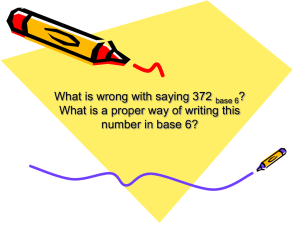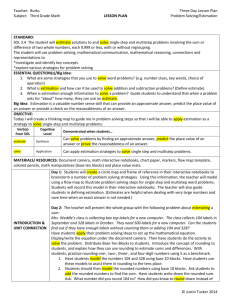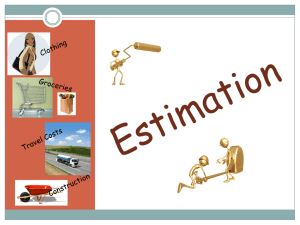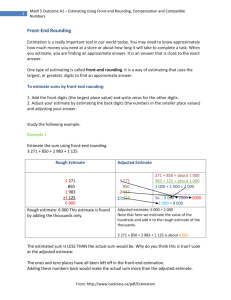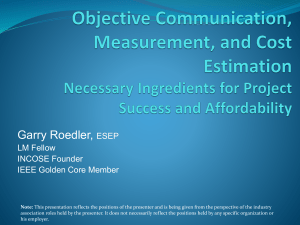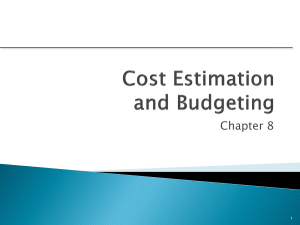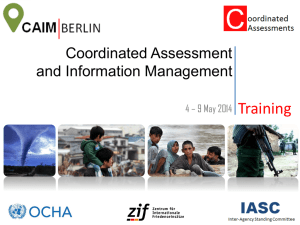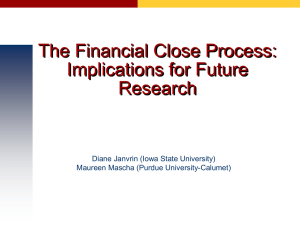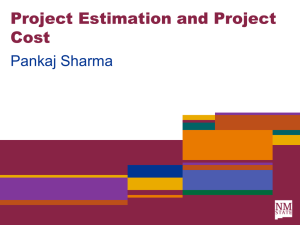Estimation is - Dalton State College
advertisement
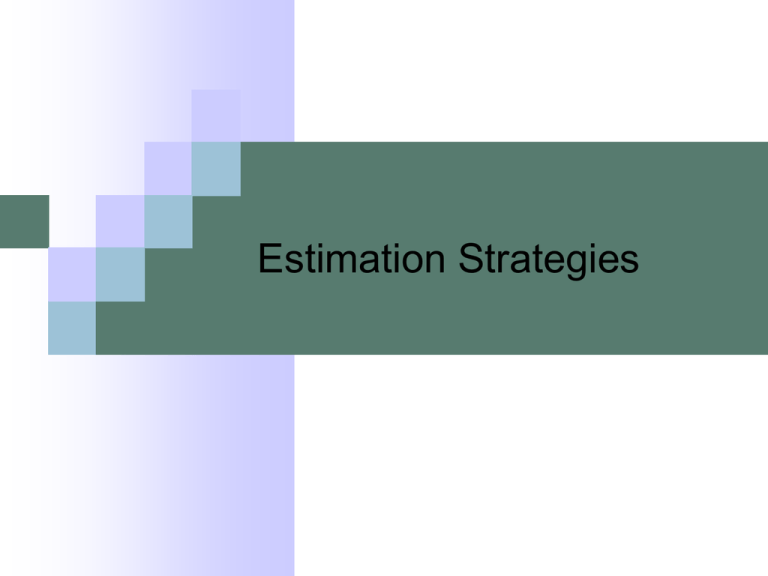
Estimation Strategies Education's purpose is to replace an empty mind with an open one. Malcolm Forbes Estimation Estimation is being able to quickly and easily get a number that is close enough to the exact answer of a mathematical problem to be useful. Usually it involves some simplified mental calculation. Every time you use a calculator, for example, it would be useful to know whether the answer it gives is sensible. This requires making an estimate. Sometimes a problem does not need an exact answer because the problem itself is not exact. Estimation Estimation is: using some computation using easy mental strategies using number sense using a variety of strategies getting close to the exact answer Estimation is not: just a guess doing hand calculations using a calculator exact Estimation Students need to know in which situations it is appropriate to use estimation. These situations basically fall into three categories: There is no need to have an exact answer. An estimate is good enough "Do I have enough money?" There is not enough information to get an exact answer "About how many times will my heart beat in an hour?" To check if the answer from a calculation is reasonable When Should You Estimate? Decide if the situation needs an estimate or an exact number. Explain your answer. 1. 2. 3. 4. 5. 6. A headline noting the number of people living in China. The amount of money a baby sitter charges per hour. The width of a window screen. The distance from Earth to the moon. The hours at soccer practice in one month. The number of tickets to sell for a play. Rounding Estimate • This is the most familiar form of estimation and is a way of changing the problem to one that is easier to work with mentally. • • Good estimators follow their mental computation with and adjustment to compensate for the rounding. To round a number simply means to substitute a “nice” number that is close so that some computation can be done more easily. Rounding Estimate Rounding estimate – choose the digit place that you will round to, round to that digit place and then add. $ 135.95 15.90 + 24.90 $ 175.75 $ 140 20 + 20 $ 180 Front-End Estimate • This strategy focuses on the leading or leftmost digits in numbers, ignoring the rest. • After an estimate is made on the basis of only these front-end digits, an adjustment can be made by noticing how much has been ignored. Front End Estimate Front-end estimate – add up the front-end digits, then round the remaining digits and add together. This tends to be the more accurate of estimation. 2.71 1.73 + 1.10 5.54 2.71 .70 1.73 .70 + 1.10 + .10 4 1.50 4 + 1.50 = 5.50 Cluster Estimate Cluster estimate – Used when several numbers are all close to the same value. $ 15.35 16.05 + 14.90 $ 46.30 $ 15 x 3 = $45 Practice Using the three methods, estimate the total cost of the following items: $4.39, $3.75, $4.96, and $2.40 Which method did you find the simplest? Which method came the closest to the true cost? Why do you think this was the closest? Practice Kim ran 2.76 miles on Monday, 2.34 miles on Tuesday, and 1.97 miles on Wednesday. Use frontend estimation to estimate the total distance Kim ran. 7.1 miles Rico’s dog has a litter of four puppies. The puppies weigh 2.33 lb, 2.70 lb, 2.27 lb, and 2.64 lb. Use clustering to estimate the total weight of the puppies. 9.9 lb Practice You have $11.50 to buy two presents. You find one item that costs $7.43. Another item costs $4.41. What estimation strategy will help you decide whether you have enough money to buy both? Explain. You used a calculator to find 383.8 – 21.9. Your estimate was 360, but your display reads 164.8. How could you have gotten 164.8 on your calculator? Practice Use the rounding method to solve the following: 1. 2. 3. 4. 5. 6. 7. 386 + 512 334 + 488 + 574 1,530 – 1,122 41,506 – 28,566 1,788 + 2,308 + 4,952 4.2 + 7.75 17.08 – 15.32 Practice Now use the front-end method: 1. 2. 3. 4. 5. 6. 7. 386 + 512 334 + 488 + 574 1,530 – 1,122 41,506 – 28,566 1,788 + 2,308 + 4,952 4.2 + 7.75 17.08 – 15.32 Which method brought you closer to the actual answer? Reasonableness Explain whether the following are reasonable: Fisherman Frank’s fish weighed 2.2 pounds per foot. The scales showed a weight of 7.3 pounds. Frank claims his fish was 14.6 feet long. True? Trixie the trampolinist bounces at a rate of 2 bounces every 6 seconds. At this rate, how long will it take her to bounce 3600 times? Trixie says 20 minutes. Accurate? Pole-vaulter Paula leaps 2.1 times as far as her little sister Polly. Polly’s highest leap is 5.8 feet. Paula claims her highest is 28 feet. Can this be? Estimating Products & Quotients Use mental math to estimate products & quotients. Multiply: 7.65 × 3.2 Round 8 × 3 Estimate = 24 Estimating Products & Quotients When dividing, use compatible numbers to estimate quotients. Compatible numbers are numbers that are easy to divide mentally. Round the divisor first, then round the dividend to a compatible number. Divide: Round the divisor Round the dividend to a multiple of 2 38.9 ÷ 1.79 38.9 ÷ 2 40 ÷ 2 = 20 Estimate Estimate the following by rounding: 3.9 × 4.67 4 × 8.512 3.25 × 14.7 460 ÷ 92 31,776 ÷ 39 40,995 ÷ 62 20 36 45 5 800 700 Practice Arlene bought 6 yards of fabric to make a quilt. The fabric cost $6.75/yard. The sales clerk charged Arlene $45.90 before tax. Did the clerk make a mistake? Explain. Shari is planning a 450 mile car trip. Her car can travel about 39 miles on a gallon of gasoline. Gasoline cost $1.89/gallon. About how much will the gas cost for her trip?
